The History of the Gatling Gun
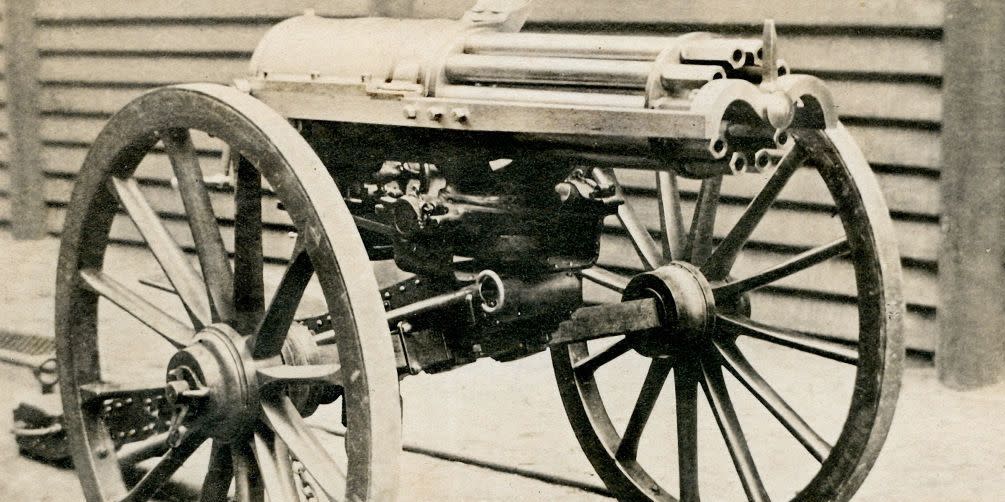
In April 1861, Richard Jordan Gatling watched hundreds of Union soldiers march through Indianapolis, ready to ride the rails to the front. In the opposite direction came a never-ending stream of badly wounded men, to say nothing of those who lost their lives. Gatling set about inventing a "labor-saving device for warfare" he hoped would minimize the number of men needed to fight a war, and thus minimize the number of men exposed to its horrors.
DIVE DEEPER ➡ Read best-in-class military features and get unlimited access to Pop Mech , starting now.
A Destructive Weapon Meant for Good
Working throughout the summer of 1861, Gatling developed the invention that would carry his name though history: the Gatling gun, a weapon featuring a barrel that was 2.21 feet long and weighed a total of 170 pounds. The Gatling is the most famous of late 19th century's manual machine guns and paved a way for the modern machine guns we recognize today.
In an age of slow-loading rifles, the Gatling offered unprecedented firepower. Even today, a century and a half after its design, the gun retains its iconic status. So why does the world still know the name of gun that's been obsolete for a hundred years?
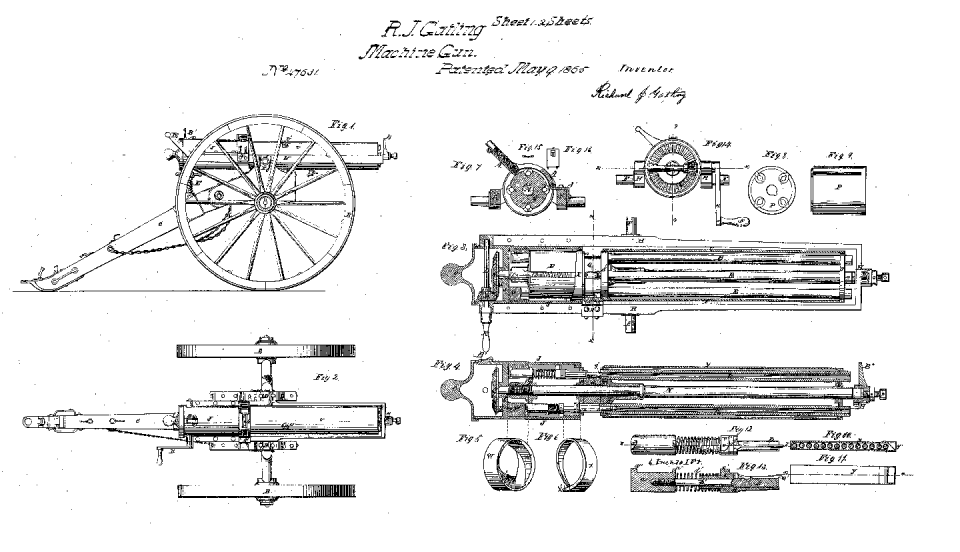
Gatling would refine the basic design of his gun over its 40-year lifespan, but the basic operation remained the same. The Gatling featured four to 10 barrels arrayed around a central axis and a top-loading magazine which loaded each barrel in turn before the continuing turn of the gun's crank fired the weapon. Each barrel fired with one turn of the crank, and the weapon's rate of fire was limited only by the speed at which the gunner could crank it. Early models fired up to 200 rounds per minute (later ones could get up to 700 to 1,000 rounds in 60 seconds)—all this while an enemy soldier in the line of fire took the same amount of time to charge and fire once.
Yet this fast-firing weapon got off to a slow start. Gatling earned his first patent in November 1862, for the "Improvement in revolving battery-guns," his idea for reducing the number of men needed to fight the American Civil War. In hindsight, we know how flawed this logic proved to be, as the Gatling gun and later machine guns caused untold death and destruction. At the time, Gatling had a difficult path even getting his weapon into the war. While the new weapon was promising, the U.S. army's reluctance to embrace the machine gun meant Gatling was ignored, at least at first.
It wasn't until summer 1863 that the Washington Navy Yard began testing the Gatling gun, with an evaluating officer reporting: "The mechanical construction is very simple, the workmanship is well executed, and we are of the opinion that it is not liable to get out of working order."
Despite this glowing report, the U.S. Navy declined to adopt the gun and it would wait another three years before the military took it seriously. A few Army officers bought Gatling guns themselves and throughout 1864-5, Union General Benjamin F. Butler first used the gun at the siege of Petersburg, Virginia, but the invention would see little action in the war that inspired its creation.
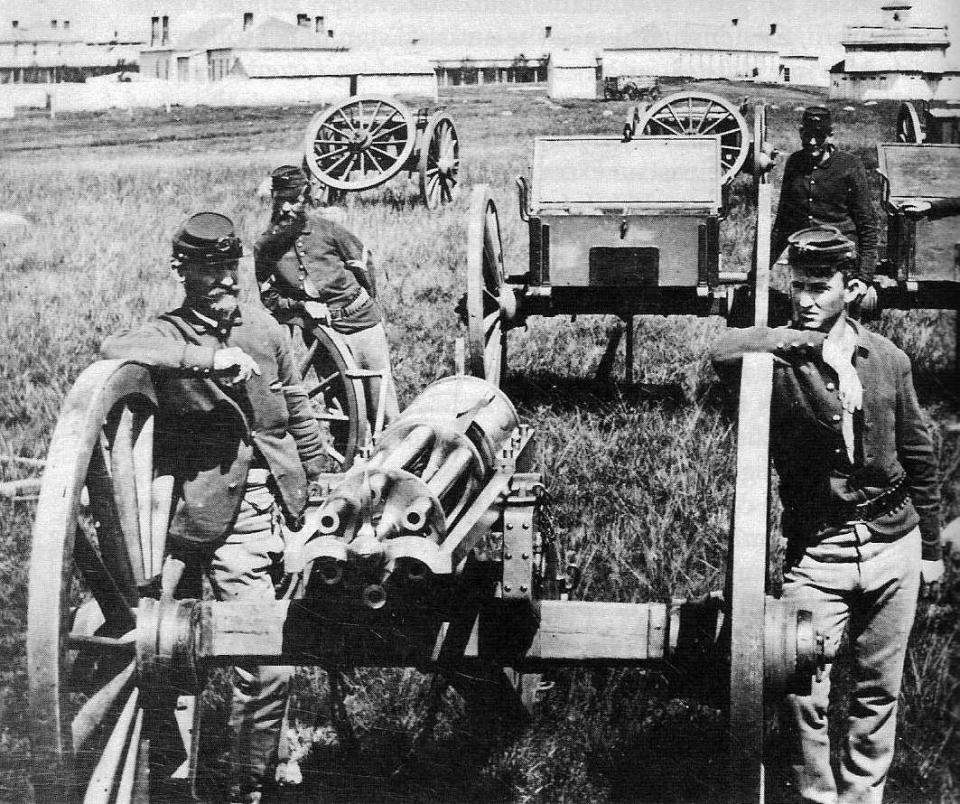
The U.S. Army made its first order for 50 1-inch and 50 .50-caliber Gatling guns in 1866, right after war's end, and Gatling approached Colt to manufacture them. Following tests at Fort Monroe, the U.S. Army used the Gatling extensively throughout the 1870s during its campaigns against Native American tribes in the West.
Custer's 7th Cavalry left their two Gatling guns behind when they embarked on the ill-fated 1876 summer expedition of the Great Sioux War. Custer believed they'd slow his advance, but without them, he and his men were famously overwhelmed and massacred.
The Gatling Gun Goes Abroad
Foreign interest charged up. In Europe, Russia became the first country to buy Gatling guns directly from Colt while the British W.G. Armstrong & Co. became one of the first European manufacturers to purchase a license to build and sell the new weapons
The first British use of the Gatling gun came in 1879 during the Zulu War. At the Battle of Gingindlovu, two guns broke up a Zulu attack with long bursts of suppressive fire that forced the Zulus to take cover. At the Battle of Ulundi the guns were used to great effect, despite several jams. The British commander, Lord Chelmsford, later wrote that the Gatlings: "proved a very valuable addition … machine guns are, I consider, most valuable weapons … where the odds against us must necessarily be great."
📩 Make your inbox more awesome.
Indeed, this statement typified the use of the Gatling during the late 19th century: The guns, with their incredible volume of firepower for the time, acted as force multipliers in engagements where the enemy were far more numerous. The Gatling would go with British units to Afghanistan, Egypt, and the Sudan in the late 1800s, remaining in service until the Maxim gun came around.
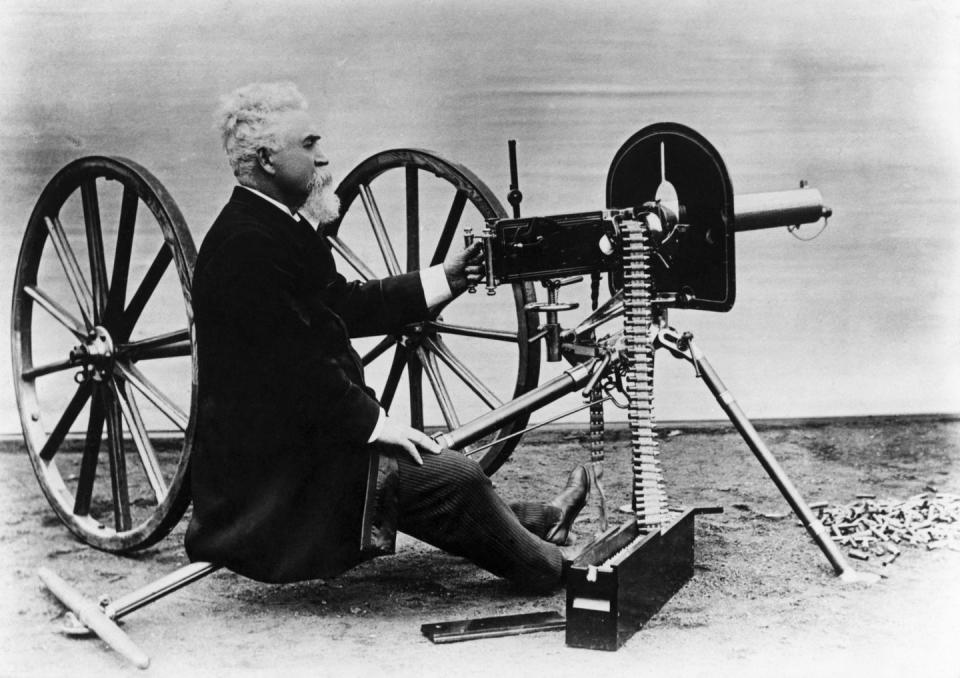
The British were not the only European nation to embrace the Gatling gun, Imperial Russia made large orders, and the Tsar used his Gatling guns against the Ottoman Empire during the Russo-Turkish War 1877-8 and again in 1905 during the Russo-Japanese War. Gatling guns went to South America during the War of the Pacific, with Peru deploying them first in 1879. By 1880, nations and individuals around the world had bought Gatling's guns.
The Gatling gun of the late 1870s was greatly improved from the early models, of tremendous rates of fire they were lighter, more reliable and extremely well made. The improved Gatling gun's finest hour came during the Spanish-American War. During the Battle of San Juan Hill, Lieutenant John Parker's Gatling Gun detachment laid down suppressive fire on Spanish positions by firing over 18,000 rounds during the American attack, preventing the Spanish from firing down on the U.S. forces.
The detachment turned back the Spanish counter-attacks, too, by decimating an attacking battalion of Spanish regulars. This success helped to prove to the U.S. Army that machine guns could be used offensively as well as defensively, with President Theodore Roosevelt himself praising Parker's "invaluable work on the field of battle, as much in attack as in defense."
The End of an Era
But the end was approaching.
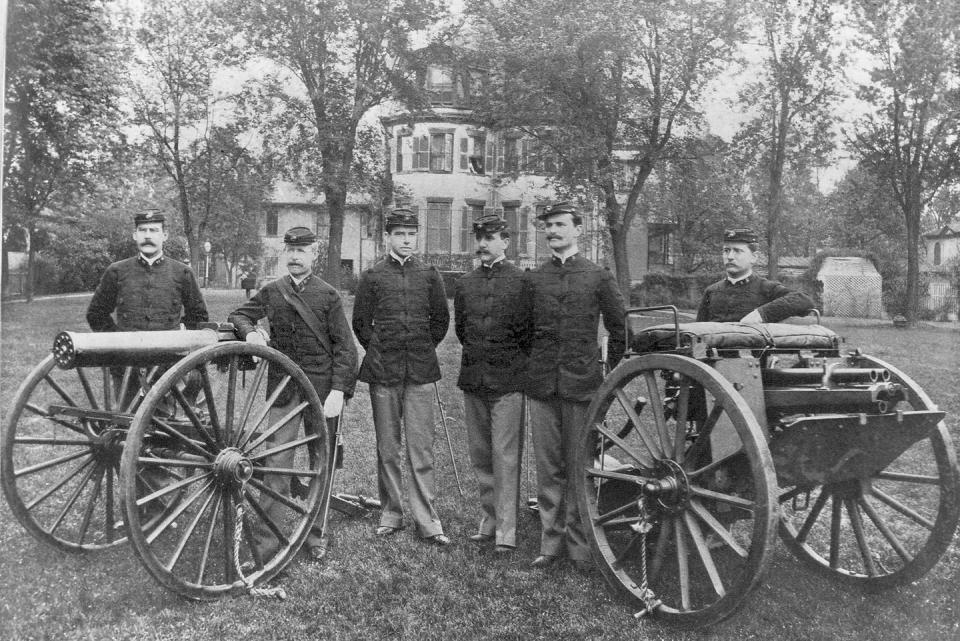
Despite American forces using the weapon into the 1890s, the Gatling gun fast became obsolete. The culprit in its quick death was Hiram Maxim's new automatic machine gun, introduced in 1886. The weapon would come to define early 20th century warfare.
Maxim's gun—like the Gatling gun—was hand operated, too, but took much less work to fire. Instead of turning a crank, the Maxim machine gun was recoil-operated, using the recoil energy created when the weapon was fired to cycle the action. All the user needed to do was keep their finger on the trigger. Feeding from a cloth belt, the Maxim could fire up to 600 rounds per minute.
Gatling tried several times to revive his design after he saw market share slipping away. In 1893 he patented a Gatling powered by an electric motor. In 1895, he tried to create a truly automatic gas-operated Gatling gun. These designs proved to be too complex or cumbersome, losing the simple practicality that made the original Gatling so good. In 1911, the U.S. Army declared all its remaining Gatling guns obsolete and began a process of rearming with automatic machine guns.
Gatling himself never confined his life's work to firearms design. The inventor patented a successful seed planter and wheat drill in 1855. He later patented designs for flushing toilets, a device to control wagon reins, and a steam plough. He died in February 1903 at the age of 84.
More than 100 years later, the Gatling gun is one of a rare few weapons that are iconic and instantly recognizable. The Gatling owes a lot of its fame to its unique operation and appearance, one cemented in the public imagination, first through Buffalo Bill's Wild West Shows and later through comics, pulp fiction, and countless films.
Today, Gatling's design lives on in the form of electrically powered M134 Minigun and fearsome auto-cannons like the GAU-8 used in the USAF's A-10. There's even a helicopter-mounted version of the Gatling gun called the Vulcan minigun which is also referred to as "Puff, the Magic Dragon" because it produces flames and smoke while firing. The Vulcan minigun is able to fire 6,000 rounds per minute and the 20mm Vulcan, the larger version of the mini, is used against other aircraft.
Even now, in the 21st century, the Gatling gun is easily distinguished from other classic weapons thanks to its distinctive design.
You Might Also Like

